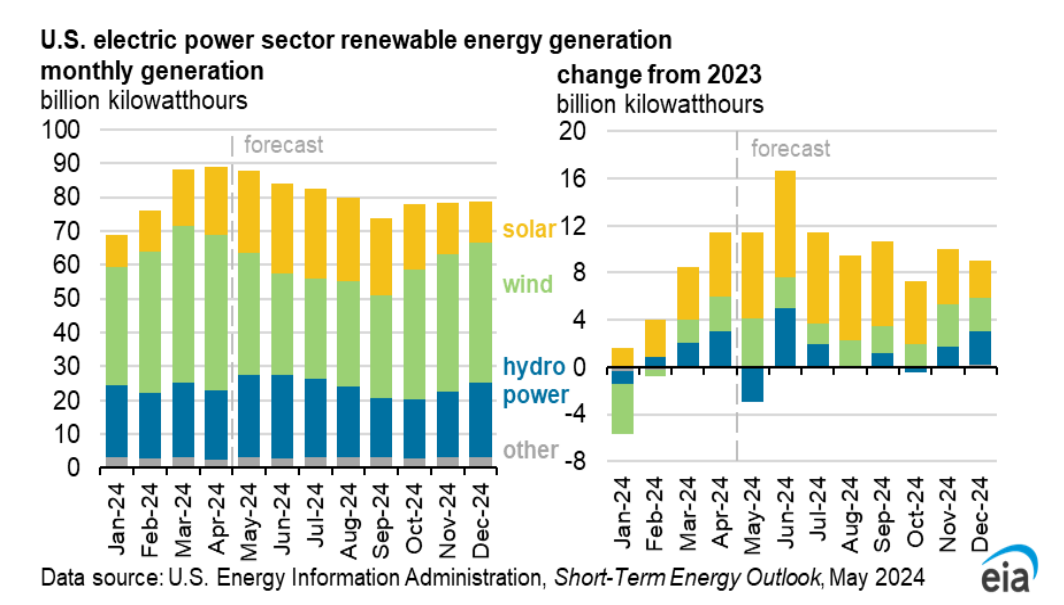From pv magazine USA
The U.S. Energy Information Administration (EIA) released its Short-Term Energy Outlook report, forecasting that the total electricity generation capacity in the United States will increase by 3% in 2024 and 1% in 2025.
“Renewable energy sources—chiefly solar—will supply most of that growth,” said EIA.
Solar, wind, and hydropower in 2023 combined for roughly 21% of electricity generation in the United States. EIA expects this figure to grow to 24% in 2025.
Solar is the major driver of this energy transition. EIA said that solar will provide 41% more electricity in 2024 than in 2023. EIA said the 19 GW of solar capacity added in 2023 and the over 37 GW expected this year account for the large jump in generation. In 2025, total solar generation is expected to grow another 25%.
“In 2025, we expect generation from solar to exceed the contribution from hydroelectricity for the first year in history,” said EIA Administrator Joe DeCarolis.
U.S. electricity generation is expected to rise by 114 billion kWh (3% growth), in 2024, with 60% of this growth served by utility-scale solar. Among other renewable sources, wind contributes 19% of 2024 electricity generation growth, and hydropower contributes 13%, said EIA.
Solar is also actively reducing the amount of natural gas burned for electricity in the United States. “The availability of more electricity generation from renewable sources, particularly solar, in 2024 compared with 2023 is preventing growth in natural gas consumption beyond 2023 levels,” said EIA.
pv magazine
Despite the forecast for 3% electricity generation growth this year, EIA said “… we forecast that natural gas consumption in the electric power sector will be about the same as last summer, which saw the most power sector consumption on record.”
However, solar and other renewables will have a long way to go if the United States is to reach its goals of a decarbonized economy. Roughly 6% of the United States’ gross domestic product (GDP) is spent on energy, said EIA. In total, nearly 5 billion metric tons of carbon dioxide is emitted by U.S. energy sources today, and EIA does not forecast a meaningful emissions reduction through 2025.

Currently, natural gas is the largest source of electricity generation, contributing 42% of the energy mix, and this is expected to remain relatively flat through 2025. The second most common generation source is coal at 17% in 2023, which is expected to decline to 14% in 2025. Wind contributes roughly 11%, while solar is expected to climb from roughly 4% to about 7% of the total energy mix in 2025.
This content is protected by copyright and may not be reused. If you want to cooperate with us and would like to reuse some of our content, please contact: editors@pv-magazine.com.




2 comments
By submitting this form you agree to pv magazine using your data for the purposes of publishing your comment.
Your personal data will only be disclosed or otherwise transmitted to third parties for the purposes of spam filtering or if this is necessary for technical maintenance of the website. Any other transfer to third parties will not take place unless this is justified on the basis of applicable data protection regulations or if pv magazine is legally obliged to do so.
You may revoke this consent at any time with effect for the future, in which case your personal data will be deleted immediately. Otherwise, your data will be deleted if pv magazine has processed your request or the purpose of data storage is fulfilled.
Further information on data privacy can be found in our Data Protection Policy.